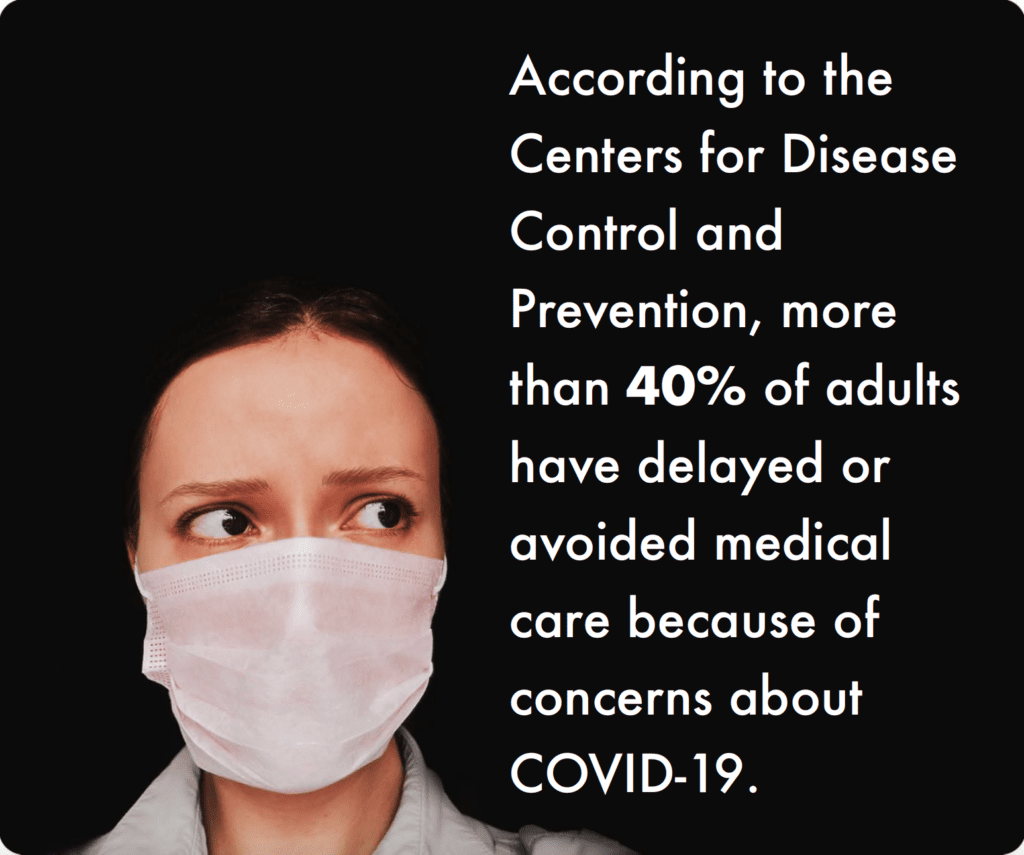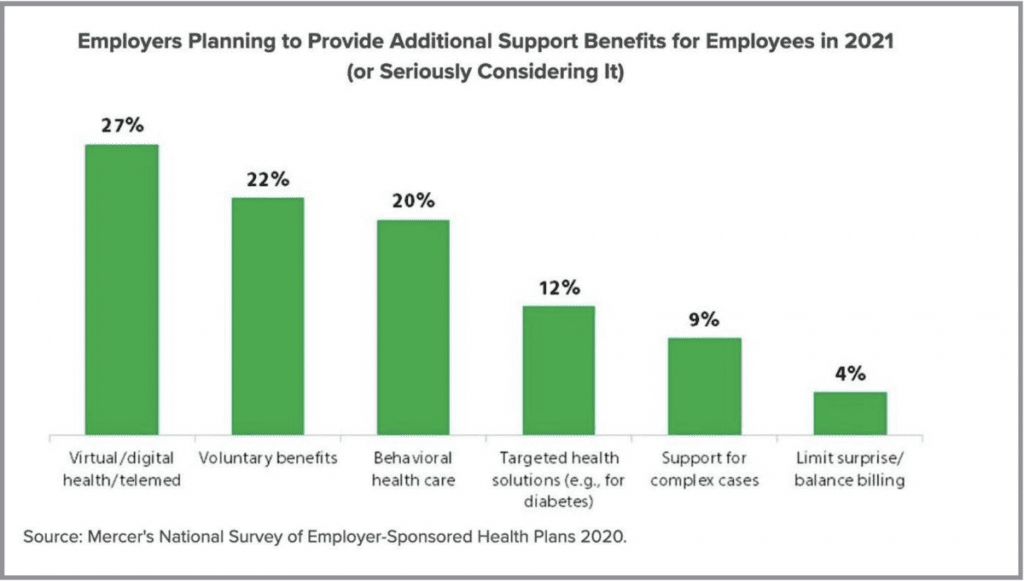Three strategies can help employers navigate the changes to employee benefits caused by COVID-19.
By Sally Prather
The onset of the COVID-19 pandemic placed most employers in crisis mode, focusing on employee health and safety and the transition to remote work. As companies now begin to focus on recovery and the “new normal,” it’s essential to evaluate longterm workforce strategy to ensure sustainability and growth. A good starting point is assessing health and wellness benefits, a long-standing pain point for many organizations.
Conducting a thorough review of health and wellness benefits will help businesses continue to meet the needs of their employees while also identifying important cost-containment opportunities. While these are not new objectives for HR executives, it’s becoming clear that COVID-19 will impact how employers achieve their goals.
The long-term implications of COVID-19 on the cost of health and wellness benefits remain unknown. It’s predicted that employers will see a spike in healthcare costs as employees seek treatment for preventive care and elective surgeries delayed due to the pandemic. According to the Centers for Disease Control and Prevention, more than 40% of adults have delayed or avoided medical care because of concerns about COVID-19.

Another big unknown is the full extent of the increased demand for behavioral health services due to the pandemic and how that may impact the workforce and the cost of benefits.
Providing health and wellness benefits remains a crucial strategic asset for employers, helping attract and retain a satisfied workforce. These three steps can help businesses continue to address the needs and wants of their employees while also managing costs.
1. Benchmarking. Employee benefits benchmarking allows businesses to gauge the impact and the value of their benefits program by comparing their current offerings against competitors of similar size and industry. This comparison can help organizations design a benefits program that addresses employee needs while also identifying cost-containing measures to make the program viable and sustainable.
Benchmarking provides actionable data that enables businesses to make strategic decisions that allow them to maintain a competitive program and assess whether current offerings are achieving sufficient return on investment. It also helps identify best practices to enhance the value of benefits offerings. The process can help organizations answer critical questions around cost containment, including what fees employers are absorbing versus what costs they are passing on to their employees. It also gives insight into the cost shifting and saving measures employers are implementing to ensure long-term sustainability.
2. Strategic planning. The benchmarking process helps businesses identify the strengths and weaknesses of their benefits offerings and can become the foundation for redefining the organization’s strategic employee benefits plan. This strategic plan should outline important steps to achieve the company’s revised benefits goals and objectives, including steps to fill benefits gaps or add cost-containment strategies to existing offerings.
The employee benefits plan should align with the organization’s overall strategic plan to help achieve desired goals and operating objectives. Essentially, it serves to answer where the organization is going and how health and wellness benefits can help get there.
3. Communication. Strategic communication is a critical component of an effective benefits strategy. It’s a primary way to reinforce the value perception of the program and educate and engage employees to help them maximize the benefits available to them. It’s also an important way to explain changes in benefits decisions and how they will impact employees.
Effective communication is targeted, timely, and integrated with the organization’s benefits enrollment program. It’s important to set metrics to gauge the success of the communication’s campaign.
Assessing health and wellness benefits is an essential task to ensure long-term viability and sustainability, as well as an engaged, satisfied workforce. Given the uncertain impact of COVID-19 on health and wellness benefits, it’s important for businesses to take stock and fully assess their programs.
A variety of cost-cutting measures are available to help reduce costs or curb impending increases. Options range from offering high-deductible health plans to providing discounts to employees for wellness program participation. The benchmarking and strategic planning process can help determine what’s the best fit based on employee demographics and marketplace trends.
Regardless, all companies should teach their employees to be good healthcare consumers, to understand the quality and value of services, and to seek care in the most appropriate setting. The end result will be significant savings, and more importantly, a healthy and empowered workforce.
Sally Prather is executive vice president of the employee benefits practice at Alera Group.















